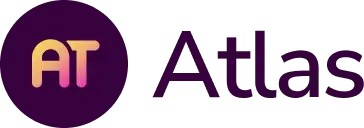By the Atlas PD Team
This post was originally published in October 2016 and was updated in July 2019.
We recently sat down with Christina Botbyl, Curriculum Coordinator at American International School Kuwait (AISK), to hear about how AISK is building institutional memory with Atlas. A school’s institutional memory is essentially the collective experience of a school; it includes everything from the school’s history and traditions, to its processes and procedures for accreditation, to its annual fieldtrips and banquets. When staff members leave to take new positions, which is a natural cycle for international schools, it’s critical for schools to find ways to effectively capture important information in order to help new educators quickly get up to speed, and allow programs to continue to grow and thrive.
Why does institutional memory matter?
Christina walked us through the evolution of AISK’s documentation process, noting how the ways in which the school stores its collective memories have a direct impact on the way school faculty engages with that information. Using Atlas, Christina and the AISK team have created a process that encourages staff members to stay active in documenting and learning from institutional memory. With meeting templates, departmental resource pages, and personalized dashboards, AISK has turned Atlas into a hub for all teacher needs—curricular and beyond.
Quoting a Chinese proverb, Christina likens the evolution of documenting institutional memory to the evolution of recording personal memories through photos. “The weakest ink is mightier than the strongest memory.” Two decades ago, we recorded these memories with film cameras and photo albums. From there, we moved to digital cameras and gained the ability to store photos on memory cards and internal hard drives. Now, we use social media networks like Facebook and Instagram to remember fond moments and share new ones with friends and family. We give our social networks the opportunity to react to these moments—to comment, to like, to share, and to give us feedback.
Take a moment to think about how you use memories. Where do you store them? How do you share them? Why do you hang onto them? Every day, we draw upon past experiences to inform our actions. Institutional memory works in the same way.
How can Atlas contribute to institutional memory?
Christina and her team realized this when they began preparing for a reaccreditation review in 2013. They reflected on their then current process by considering these questions:
- To what extent is our teaching staff involved in our school-wide decision-making process?
- How does our documentation process affect the ways in which our staff engages with institutional memory?
- How do we hold our team accountable for following through on meeting action items?
- How do we ensure that we repeat what works and adjust what doesn’t?
- Are we providing adequate knowledge transfers for new hires?
- How accessible are our school-wide documents, resources, and best practice reports?
For AISK, these reflective questions brought helpful information to light. Although the school had a strong decision making-process in place, it lacked transparency and collaboration. The process also included a number of outdated resources, including hard-copy reports stored in file cabinets and old policy handbooks kept in various divisional offices. AISK realized that their process was not operationally efficient, in large part due to the way they had been documenting their strategic planning meetings and school growth measures. Using an Excellence by Design model, AISK created a future-focused goal: By 2020, demonstrate a more collaborative and transparent process for developing, implementing, communicating, and monitoring organizational and long range strategic plans.
Christina and her team determined that an improved strategic planning process would only come with an improved documentation system. After spending a week at the Atlas Education Center in the Rubicon Office in Portland, Oregon, Christina began to think about how she and her team could use Atlas to document elements of school planning beyond the curriculum. Already used by school faculty, Atlas was the perfect platform to support the AISK strategic plan moving forward; as Christina put it, “Our lives become easier when we work smarter, not harder.”
How AISK documents institutional memory with Atlas:
Brainstorm new ways to use courses and units in Atlas. Creating courses for different departmental and administrative groups will give Atlas users easy access to shared material. With a “course” built for each, schools can centralize material with “units” that house meetings minutes, shared resources, helpful curriculum examples, and more. AISK uses a creative method for organizing these “courses.” Take a look at the various school types, schools, and map types AISK uses to organize its administrative courses.
By using the various filtering options in Atlas, teachers can easily navigate to helpful resources.
One of these administrative templates is used for what AISK calls “Action Notes.” All AISK teams use a streamlined template to document what was presented at meetings, and how action will be taken to address each agenda item.Update your units to capture information that will be helpful for your school’s growth and curricular process moving forward. Examples might include revising the checkable options in checkbox categories to reflect new school goals and objectives or adding a new free text box to gain teacher reflections on academic units, departmental processes, or new policies. Encourage teachers to follow a “Style Guide” to ensure that the data going into Atlas is uniform across courses and units.
Consider implementing a new method for titling units that share a component in common. For Meeting Minutes, AISK follows a numbering system to title each with the date on which it occurred. This Grade 8 Team Meeting course from AISK is a great example of uniform unit titling, and creative use of the curriculum map to document department meetings.Finally, take advantage of the Attachment capabilities of Atlas by attaching files from your computer, Google Drive, and links from the internet. Gone are the days when important resources could be found only by visiting various departmental offices and searching through file cabinets. When stored in one place, teachers will have no trouble accessing material from various individuals.
Through this AIS Tech Integration Resources course, any staff member with Atlas access can navigate to this page and take advantage of the many links and attachments related to technology integration in the classroom.When a school uses Atlas as a platform for school-wide strategic planning conversations, Administrative teams have reason to expand Atlas usage to teaching assistants, business staff, and operational staff. By expanding the scope of Atlas, schools encourage new and old users to more frequently access the system in order to gain familiarity with its many benefits.
At AISK, Atlas users can access meeting agendas, see which decisions were made, and view who is responsible for carrying out different tasks. With its Administrative Council Reports, AISK created a way for staff members to stay abreast of significant changes in the school.
Remember, Atlas can’t do it alone!
In order to create a sustainable process for documenting institutional memory, schools need a supportive administrative team. Conversations around strategic planning and institutional memory are only possible when everyone speaks a common language. For AISK, that language was Atlas. Through workshopping with the Rubicon team, AISK was able to provide PD to ensure that all members of the faculty and staff were fluent.
This professional development work is valuable for returning Atlas users and new users alike. In addition to PD sessions on deepening skills in Atlas, school administration can put in place easy onboarding processes for introducing new hires into the system. One way that AISK does this is by pushing custom dashboards to new users’ systems. New PYP teachers receive a dashboard with quick links to PYP resources, Units of Inquiry, and departmental meeting notes. New administrators receive a dashboard with helpful reports and links to the Administrative Council shared course. In any school, but especially for international schools with high turnover rates, plans and processes must be documented to ensure that they “endure beyond the tenure of their members.”
We encourage all of our partner schools to think about ways in which you could use Atlas to support Institutional memory moving forward!

